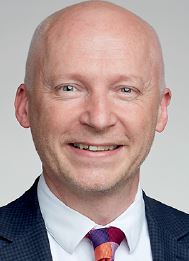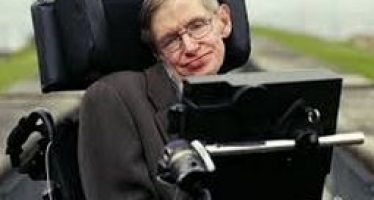Marcus du Sautoy: What We’ll Never Know
 He poses questions that may never be answered and argues that the field of human knowledge is finite – confined by seven edges beyond which the truly incomprehensible resides: the nature of time, the source of human consciousness, and other phenomena destined to remain shrouded in mystery.
He poses questions that may never be answered and argues that the field of human knowledge is finite – confined by seven edges beyond which the truly incomprehensible resides: the nature of time, the source of human consciousness, and other phenomena destined to remain shrouded in mystery.
Mathematics professor Marcus du Sautoy of Oxford University is not reluctant to display his own apprehension and confusion in the face of pressing questions. Is here a multiverse? Is an infinite row of odd numbers smaller than one that also includes even numbers? Can a lepton be subdivided into an even smaller particle?
Probing the limits of knowledge often brings Professor Du Sautoy into the realm of philosophy where certainty is usually considered contextual – a conclusion based on the acceptance of common knowledge with the possibility of error – yet necessary for human survival. Doubting every piece of data would (undoubtedly) result in paralysis. “Sitting on the fence is not an option. A belief in an answer one way or the other will have an impact on how we lead our lives,” says Prof Du Sautoy.
It also helps to appreciate and hold on to the “knowns” already unearthed and celebrate the progress made – from the sequencing of the human genome to the unravelling of Fermat’s Last Theorem.
Writing in What We Cannot Know: Explorations at the Edge of Knowledge, the professor argues that the limitations of language, brainpower, and reasoning may hamper humanity’s quest for knowledge. Stuck within a system, mankind cannot conceive of what is outside. Drawing a neat circle, Prof Du Sautoy rather depressingly concludes the obvious: we probably cannot know for sure what it is we cannot know.
Then there is the apparent randomness of the universe as pointed out by quantum physics. As it happens, the gods do play dice. Danish physicist Niels Bohr (1885-1962), given to philosophy, pointedly remarked: “If quantum physics hasn’t profoundly shocked you, you haven’t understood it.”
Mathematics, Prof Du Sautoy’s own field and long deemed a bastion of unshakable certainties, turns out to be not that different. Mathematicians have shown that some theorems can be proved but only by calculations that would take the lifetime of the universe to complete. That would constitute a waste of energy since it has also been shown – by Austrian logician Kurt Gödel in the 1930s – that any mathematical system is incomplete. Gödel’s own Incompleteness Theorem ended efforts to find a single set of statement (axioms) to describe all of mathematics – including Isaac Newton’s Principia Mathematica.
Approaching the uncertainties of the unknowable with precision and panache allows Prof Du Sautoy to show that, also in science, the journey matters as much as the ultimate destination – and is much more interesting besides. Since his election to the Simonyi Professorship for the Public Understanding of Science in 2008 – successor to Richard Dawkins, the evolutionary biologist and militant atheist – Prof Du Sautoy has been a regular guest on television shows detailing the intricacies of mathematics – putting the fun in math – in a way that keeps even lifelong numberphiles enthralled.
Prof Du Sautoy distils deep meaning from every number. In Bhutan he was asked to dissect the number 108 which in Buddhism represents the number of sense categories. The professor promptly pulled the number apart into its prime divisors (2x2x3x3x3) which, as it happens, dovetails nicely with the sensory experience: five primary senses plus conscience which may be good, bad, or indifferent and can play out in the past, the present, or the future – you do the math.
He also tackled the number 42, central in The Hitchhiker’s Guide to the Galaxy as the answer to the “ultimate question of life, the universe, and everything” calculated by Deep Thought, a planet-sized supercomputer, over the course of 7.5 million years – eons during which the ultimate question was sadly forgotten, rendering the answer irrelevant. No so for Prof Du Sautoy who promptly linked 42 to the Riemann zeta function which is used in advanced statistics and the analysis of dynamical systems.
A true optimist, Prof Du Sautoy is not easily defeated by the unknowable. He keeps searching for patterns in prime numbers. None has been observed yet and, indeed, none may exist. That fact, which the professor hopes to disprove, for now remains the foundational stone of encryption which derives its strength from a failure to understand the nature of prime numbers. A scientist turns hacker.
You may have an interest in also reading…
Alessandro Carlucci: Going Global on Intuition and Emotion
Ethics and aesthetics: That is what Alessandro Carlucci sells as CEO of Brazilian cosmetics firm Natura, now wrapping up its
Stephen Hawking: In the Footsteps of Sir Isaac Newton
To grasp the size, shape and nature of the universe requires a vast mind such as only very few possess.
Sophie in ‘t Veld: Calling the European Council to Order
Dutch MEP Sophie in ‘t Veld believes that the freedom of every person to hold their own thoughts and opinions


















































































